
In October, tens of millions were left homeless and more than 1,700 people were killed in Pakistan during intense rainfall and runoff from melting glaciers that overflowed the banks of the 1,900-mile-long Indus River, inundating a third of the world’s fifth-most-populous country.
UNICEF warned that 16 million children in Pakistan are now facing acute malnutrition and disease as the country cleans up from what Prime Minister Shehbaz Sharif described as the country’s worst flooding since its foundation in 1947. The World Bank estimates the country faces $30 billion in damages and economic losses from the deluge.
The 2022 Pakistan floods may be considered one of the worst natural disasters ever, but they pale in comparison to some other catastrophes of the past half-century, including the 2005 earthquake that rattled the Kashmir region of Pakistan and India, killing about 88,000 people and toppling tens of thousands of buildings, leaving millions homeless.
But that disaster isn’t one of the deadliest to strike over the past half-century, either. To compile a list of the 10 deadliest natural disasters since 1970, 24/7 Tempo reviewed a list compiled by the Insurance Information Institute, an insurance industry association. The list excludes natural disasters caused by a drought or heatwave events.
Click here to see the deadliest natural disasters of the past half-century
It turns out that nine of the world’s 10 deadliest natural catastrophes have struck in Asia. In the 1970s, China was hit by a devastating super typhoon and, a year later, an earthquake that together killed more than 470,000 people. In 2008, China was hit again, when the Sichuan quake claimed nearly 90,000 lives. (Read about the most powerful earthquakes ever recorded.)
The deadliest natural disaster of all pummeled Bangladesh in 1970, when Cyclone Bhola slammed into the country’s low-lying coastal areas, lobbing 20-foot-tall storm surges into impoverished communities whose inhabitants had no escape. The tempest killed 300,000 people. (These are the countries where the most people have died in natural disasters.)

10. Sichuan earthquake
> Location: China
> Date: May 12, 2008
> Est. death toll: 87,652
The 7.9-magnitude Great Sichuan Earthquake, also known as the Wenchuan Earthquake, struck the southwestern Chinese province of Sichuan with tremors felt as far away as Shanghai, more than 1,000 miles distant from the epicenter near the provincial capital of Chengdu. The quake induced massive landslides that toppled buildings and left millions of people homeless.
[in-text-ad]
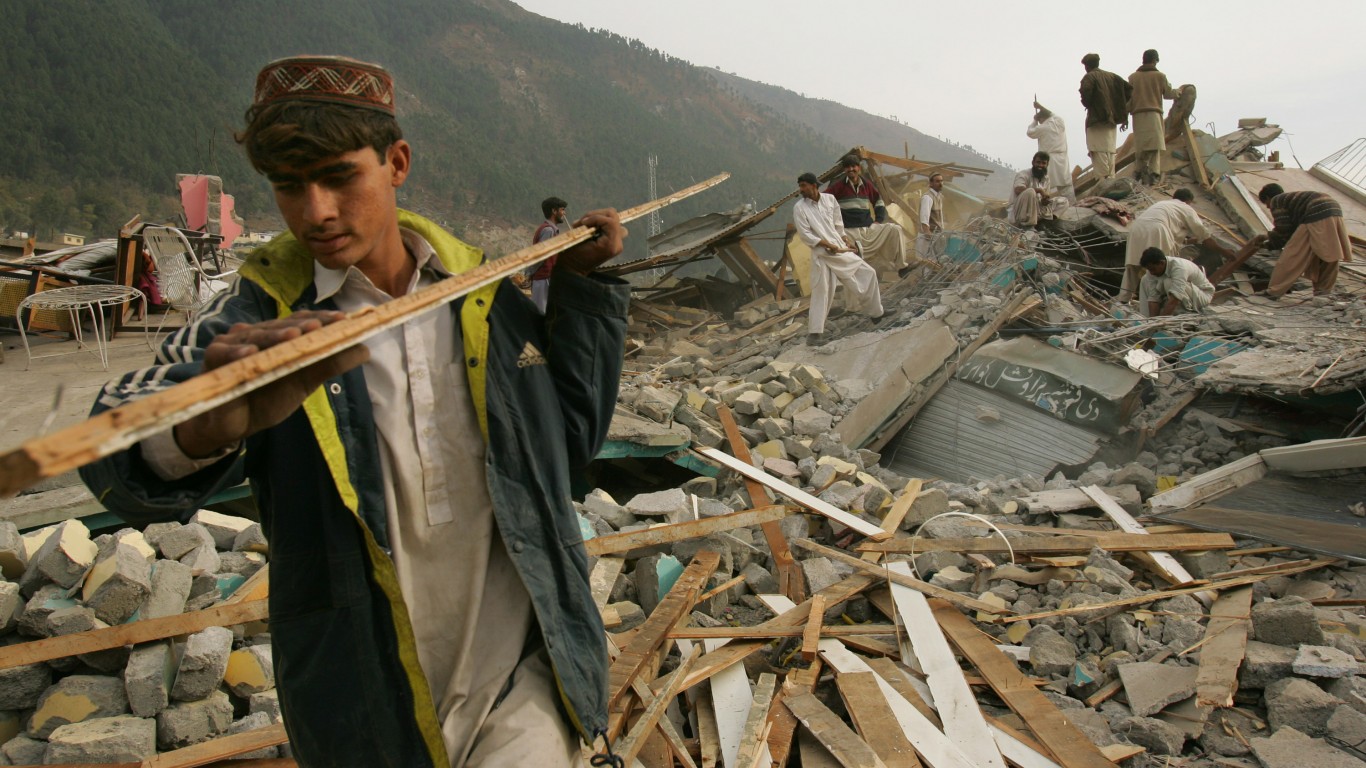
9. Kashmir earthquake
> Location: Pakistan
> Date: Oct. 8, 2005
> Est. death toll: 88,000
The quake that struck northern Pakistan measured 7.6 on the magnitude scale, inflicting extensive damage in and around the regional capital of Muzaffarabad. Entire villages were leveled and an estimated 32,335 buildings collapsed across much of the country and into northern India, where thousands were killed or injured, and in parts of Afghanistan and Bangladesh. About four million people lost their homes in the quake.
8. Vietnam floods
> Location: Vietnam
> Date: Aug. 1971
> Est. death toll: 100,000
The Vietnamese capital of Hanoi had for centuries been protected by dikes and reservoirs to control seasonal flooding of the Red River Delta, a convergence of three major tributaries that have both threatened and nourished locals. But an unusually strong rainy season in 1971 came during the Vietnam War, which hampered the city’s ability to respond to the overloading of its flood control system. Though overshadowed by the war, this flooding was one of the worst natural disasters in the history of Vietnam.

7. Cyclone Nargis
> Location: Myanmar
> Date: May 2008
> Est. death toll: 138,366
After forming into a massive category 4 storm over the Bay of Bengal, Cyclone Nargis plowed into Myanmar (Burma) with sustained winds of 130 miles per hour. The storm path took it right over the country’s heavily populated city of Yangon (Rangoon), which had been the capital of the country until 2006. Nargis caused extensive flooding in the city and nearby coastal plains.
[in-text-ad-2]
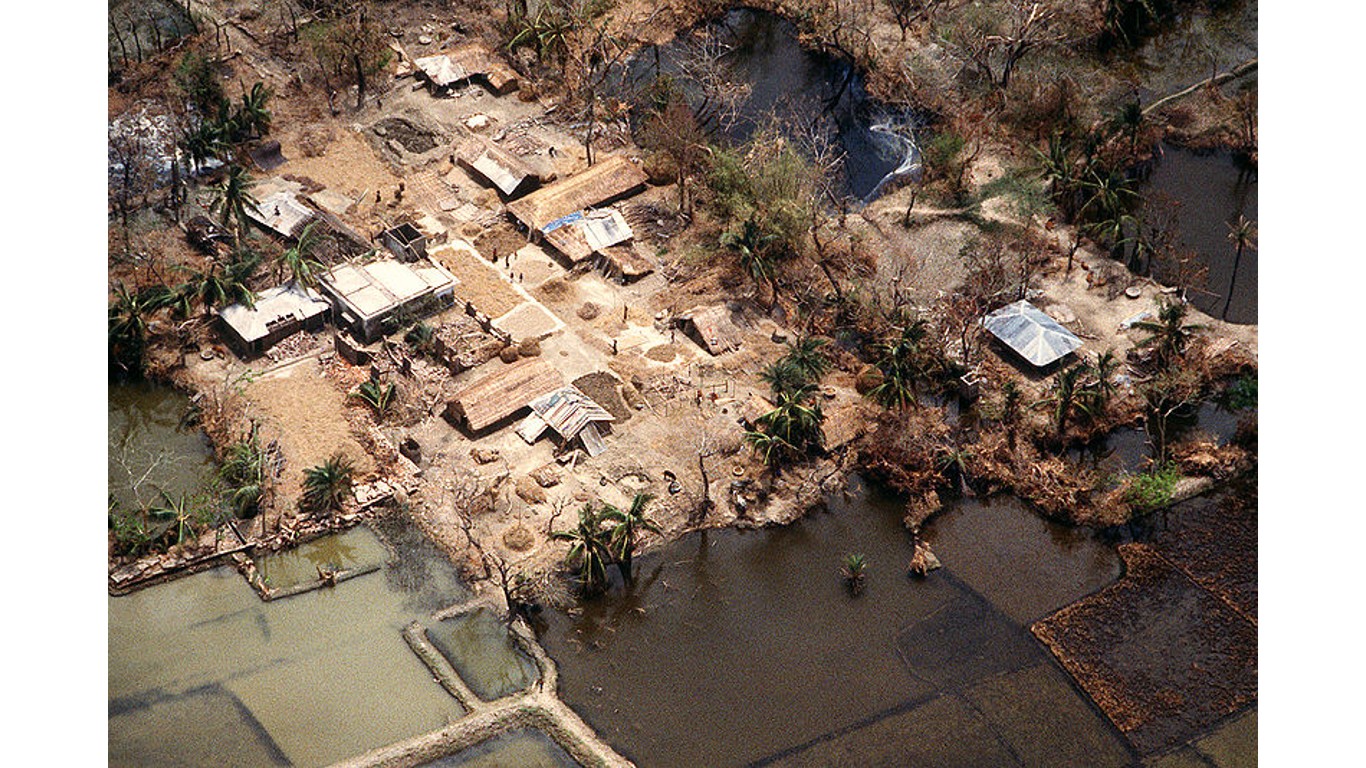
6. Cyclone Gorky
> Location: Bangladesh
> Date: April 1991
> Est. death toll: 139,000
Cyclone Gorky, a massive category 5 storm, made landfall in Bangladesh on the evening of April 29, bringing with it tidal surges as high as 30 feet. The storm hovered over the coastal lowlands for three to four hours, dumping a massive amount of rainfall on impoverished communities living at sea level. Later it was determined that cyclone shelters prevented 20% of the deaths than would have occurred without them – however there weren’t enough of these shelters to meet the demand.

5. Port-au-Prince earthquake
> Location: Haiti
> Date: Jan. 12, 2010
> Est. death toll: 160,000
Of the ten deadliest natural catastrophes on this list, the 2010 Haiti earthquake is the only one outside Asia. The quake, magnitude 7.0, toppled hundreds of thousands of homes and tens of thousands of commercial buildings and was followed by dozens of aftershocks. One-story homes topped with sheet metal fared better than other structures with concrete rooftops, such as apartment warrens, churches, commercial centers, and government buildings lacking earthquake-resistant features.
[in-text-ad]

4. Indian Ocean earthquake and tsunami
> Location: Indian Ocean Basin
> Date: Dec. 26, 2004
> Est. death toll: 227,898
A 900-mile segment of fault line off the Indonesian island of Sumatra, where the Indian and Australian tectonic plates meet, slipped, causing an incredibly powerful undersea quake, magnitude 9.1, that lifted a portion of the seafloor to break upwards by as much as 131 feet in a matter of seconds. Within 20 minutes, 100-foot-tall waves from the ensuing tsunami drowned the shoreline of Banda Aceh at the northeastern tip of Sumatra. Successive large waves struck the coasts of Thailand, India, and Sri Lanka and caused deaths as far away as South Africa, thousands of miles to the southeast across open ocean.
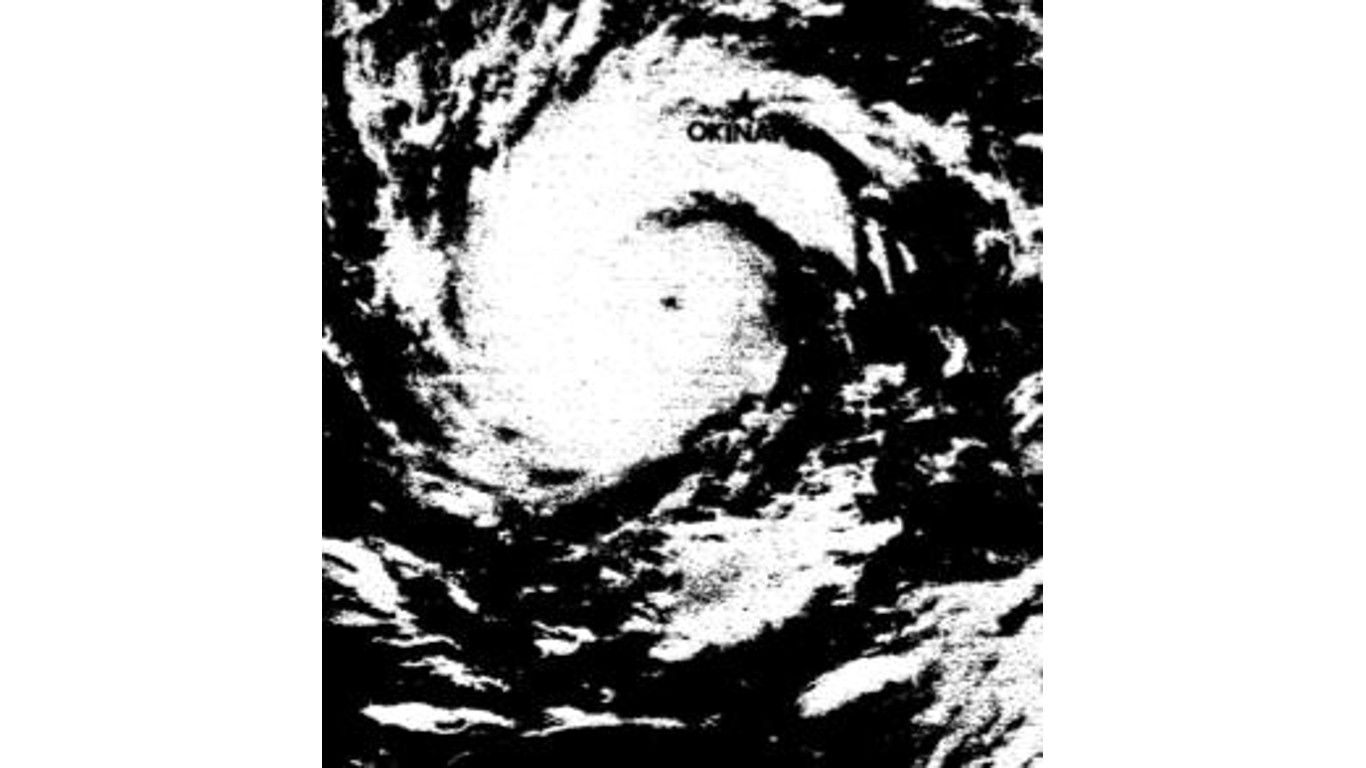
3. Super Typhoon Nina
> Location: Taiwan, China
> Date: July 30, 1975
> Est. death toll: 230,000
Nina, a category 4 super typhoon, stalled over central China for three days, causing extreme rainfall and catastrophic flooding. This unusually high amount of precipitation was caused by the typhoon’s interaction with another tropical depression. Most of the deaths were caused by the catastrophic failure of a Banqiao Dam on the Yellow River in Henan province that caused a rush of water up to 33 feet high and seven miles wide, traveling at about 30 miles an hour. Dozens of other dams and reservoirs were also breached in the storm.
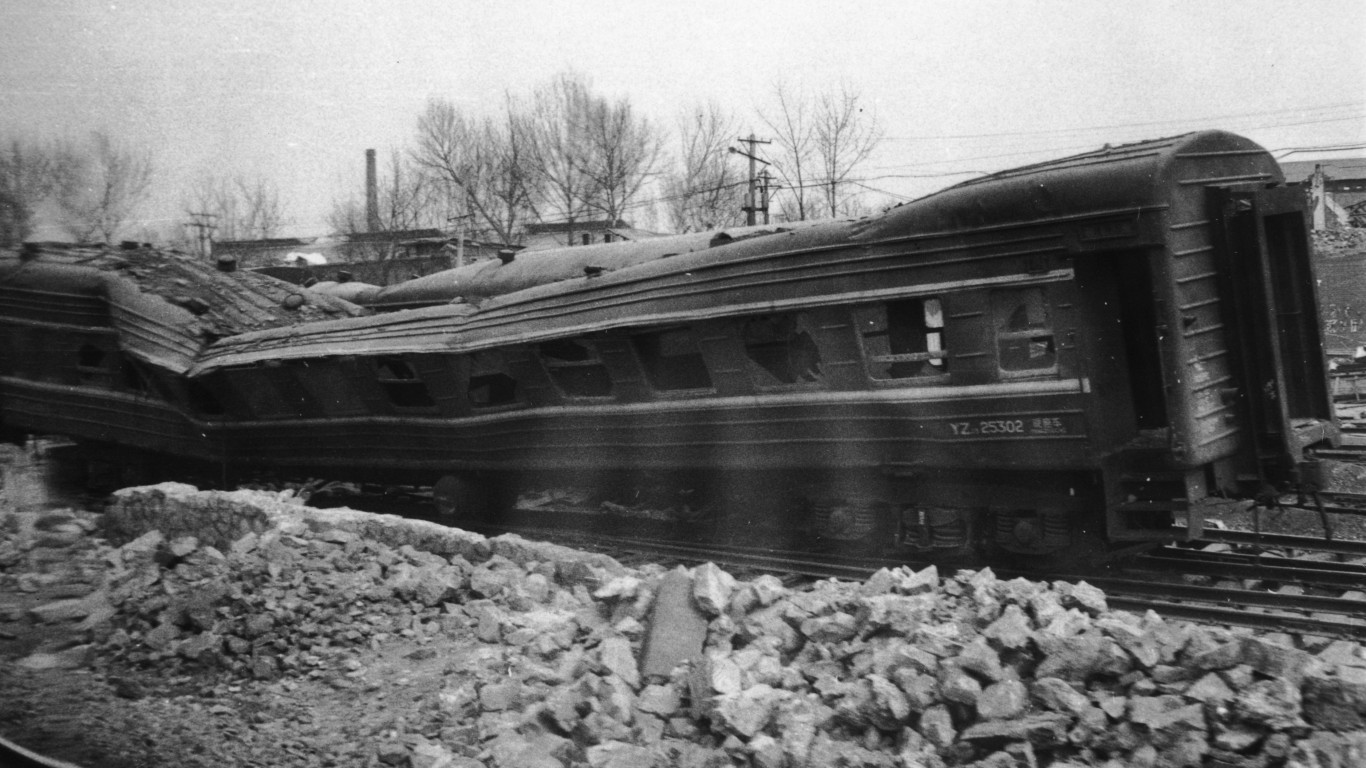
2. Tangshan earthquake
> Location: China
> Date: Jul. 27, 1976
> Est. death toll: 242,769
The magnitude-7.8 quake struck the densely populated industrial city of Tangshan, Hebei province, in the pre-dawn hours. Within minutes most buildings in the city toppled or were so severely damaged that they had to be demolished. The quake caused death and injuries in nearby Beijing and Tianjin. Though slightly less powerful than the Sichuan quake of 2008, the Tangshan earthquake remains the deadliest ever recorded in China.
[in-text-ad-2]
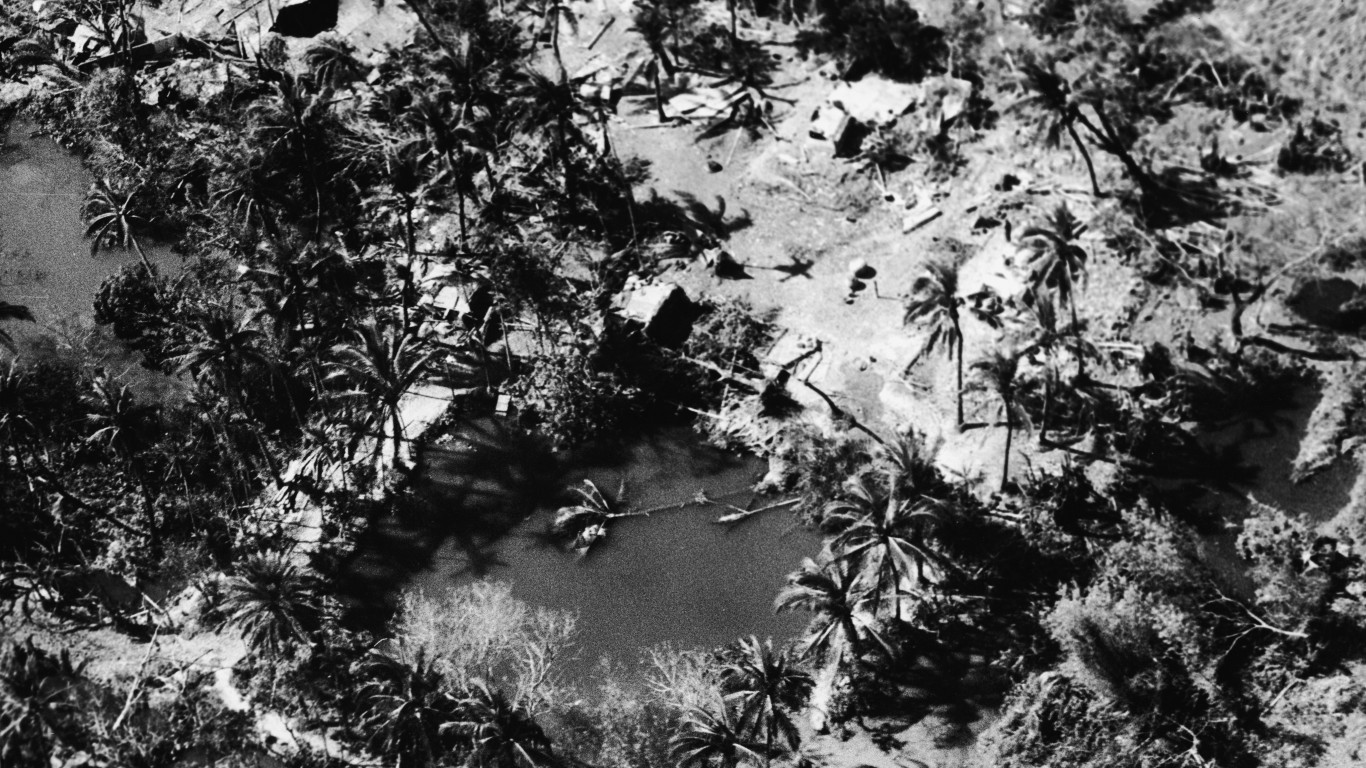
1. Cyclone Bhola
> Location: Bangladesh
> Date: Nov. 12, 1970
> Est. death toll: 300,000
Bangladesh has borne the brunt of two of the world’s ten deadliest natural catastrophes. Cyclone Bhola was a category 4 tropical cyclone, and though it was weaker than Cyclone Gorky in 1991, it inflicted more than double the death toll and remains the deadliest natural catastrophe ever recorded. Cyclone Bhola delivered 20-foot storm surges and sustained winds of 140 miles per hour. More than a third of Bangladesh is less than 20 feet above sea level.
Cash Back Credit Cards Have Never Been This Good
Credit card companies are at war, handing out free rewards and benefits to win the best customers. A good cash back card can be worth thousands of dollars a year in free money, not to mention other perks like travel, insurance, and access to fancy lounges. See our top picks for the best credit cards today. You won’t want to miss some of these offers.
Flywheel Publishing has partnered with CardRatings for our coverage of credit card products. Flywheel Publishing and CardRatings may receive a commission from card issuers.
Thank you for reading! Have some feedback for us?
Contact the 24/7 Wall St. editorial team.
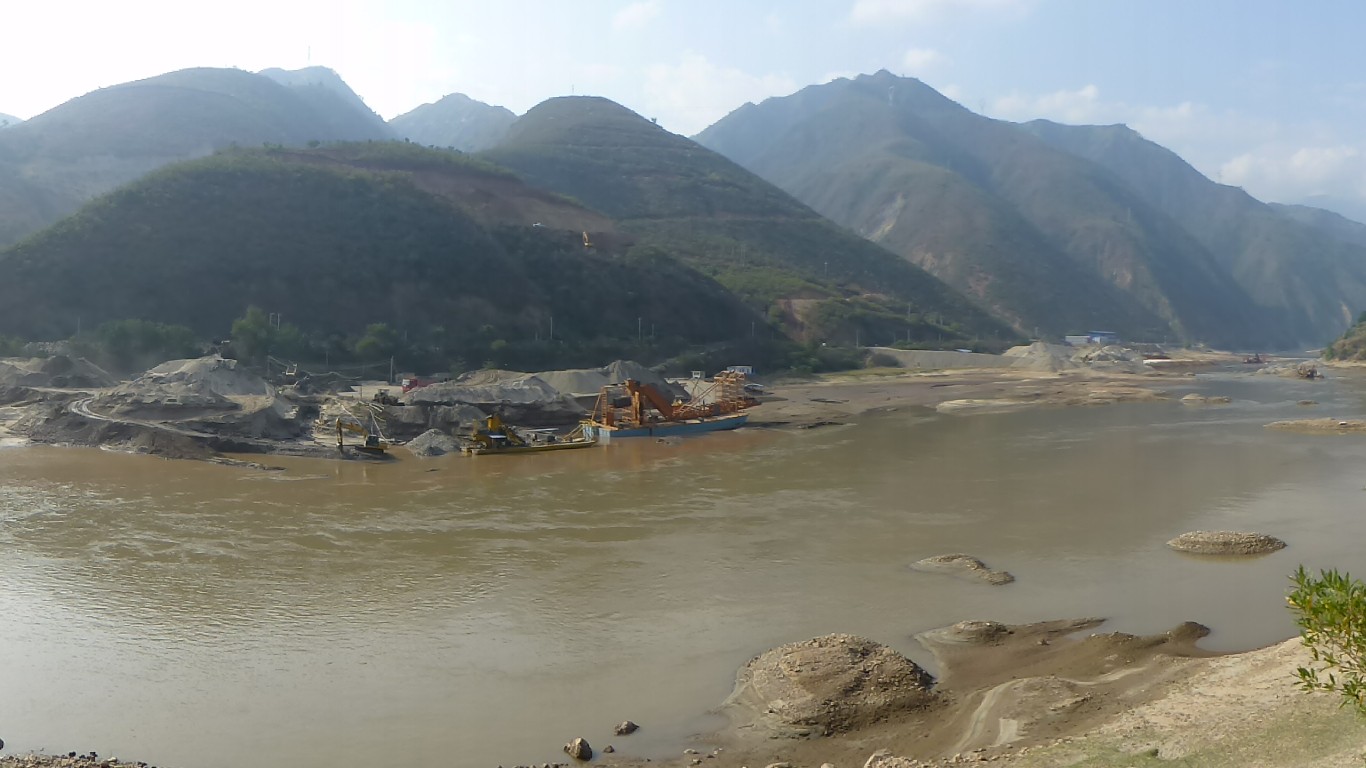
 24/7 Wall St.
24/7 Wall St.